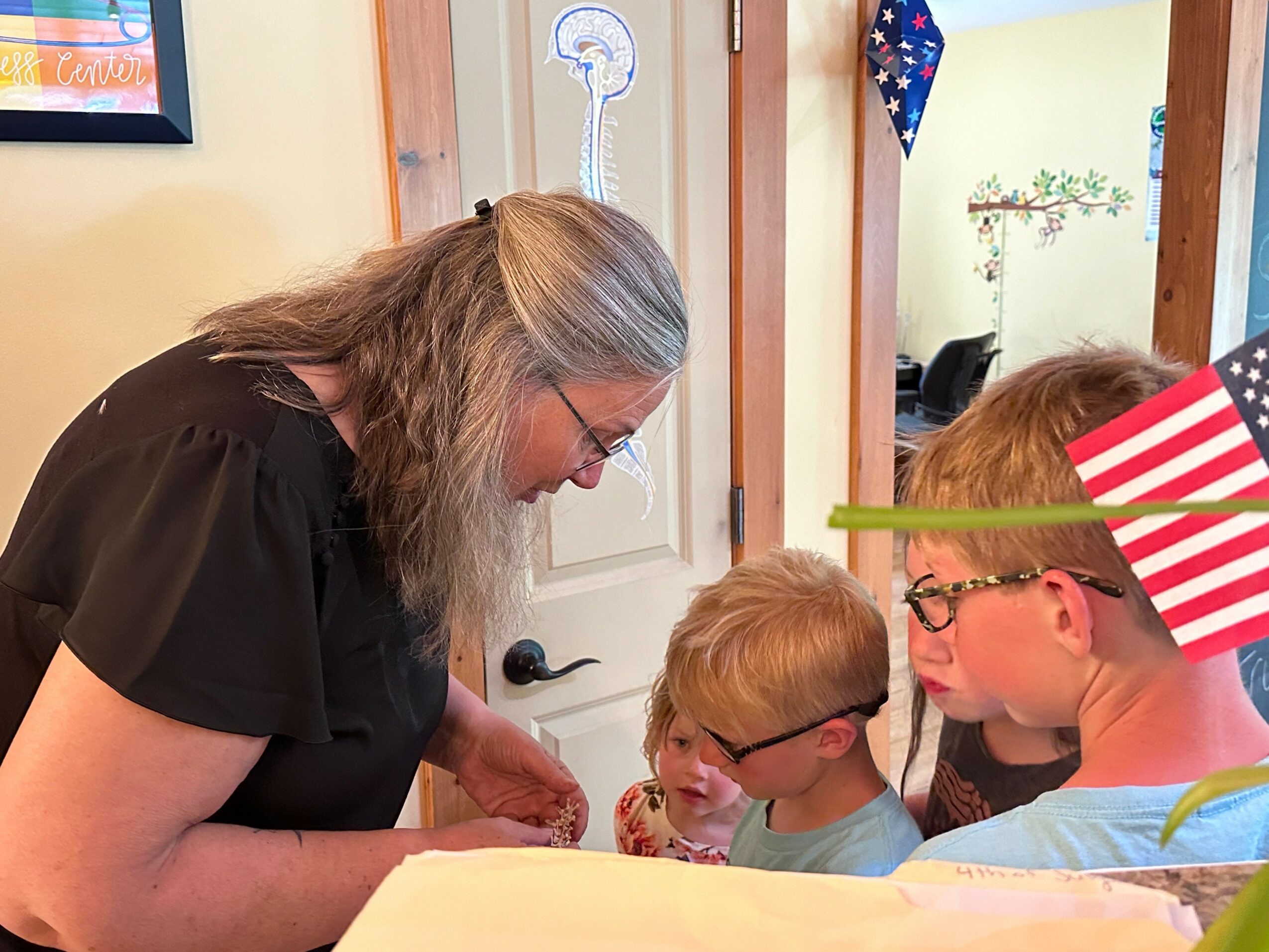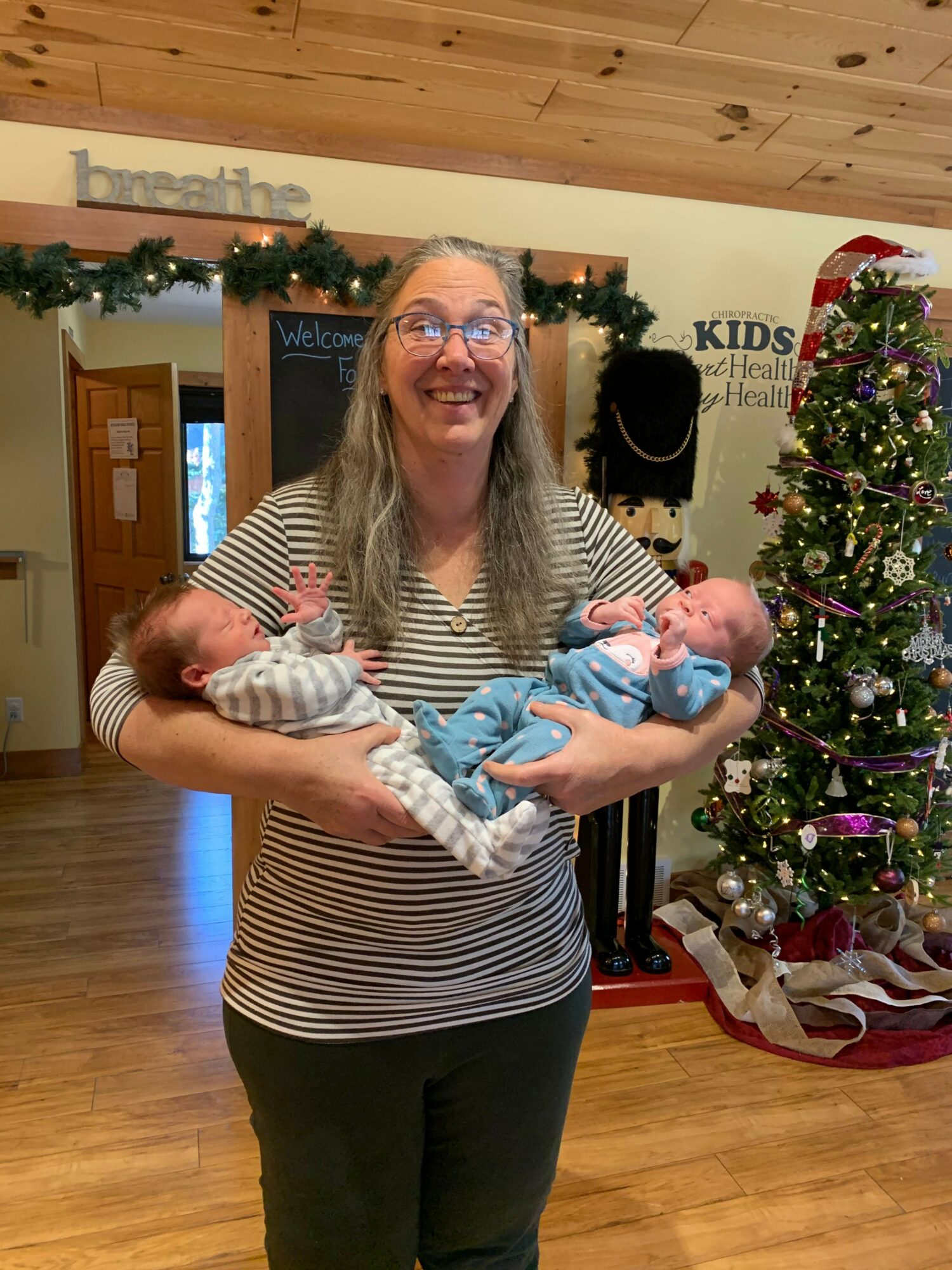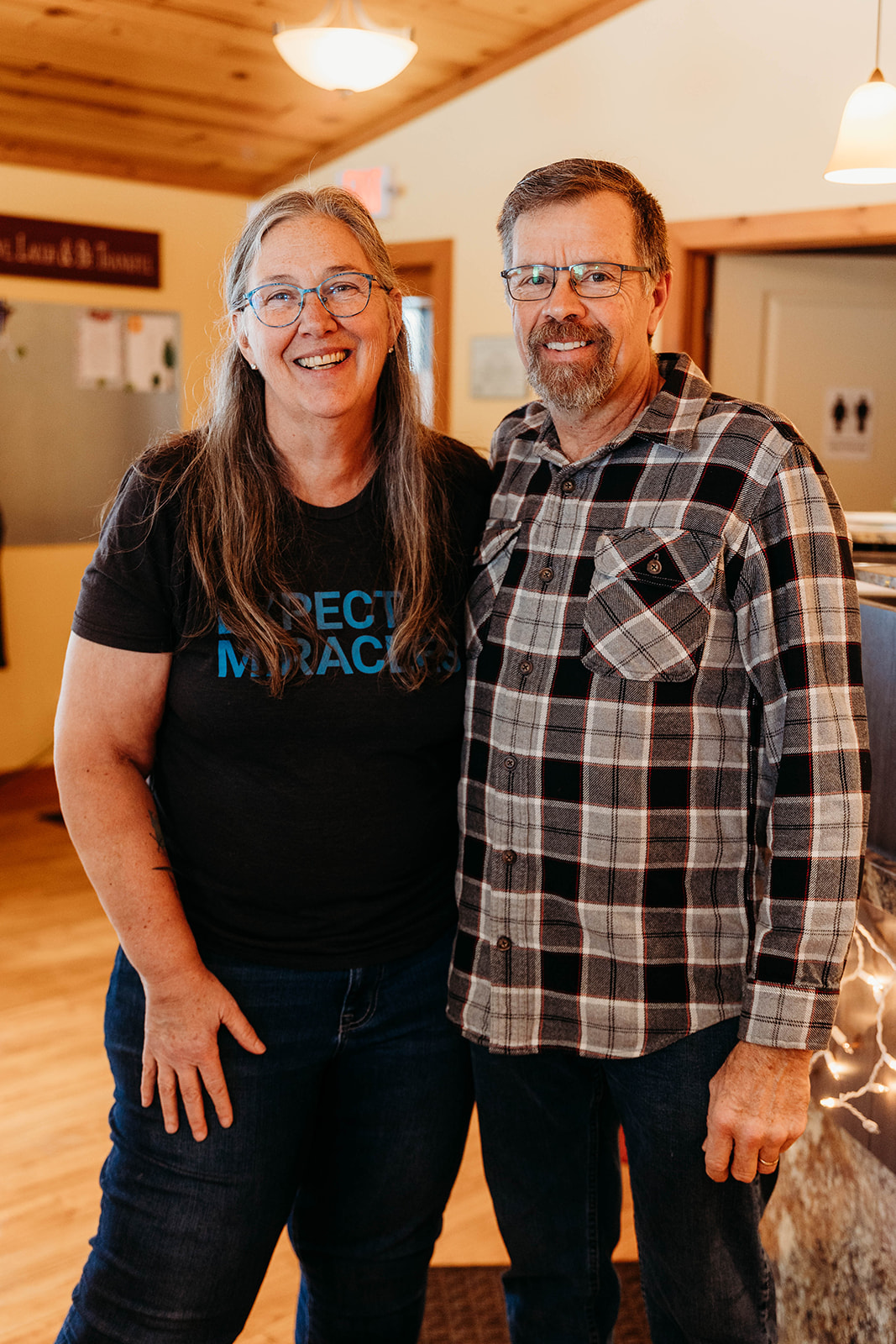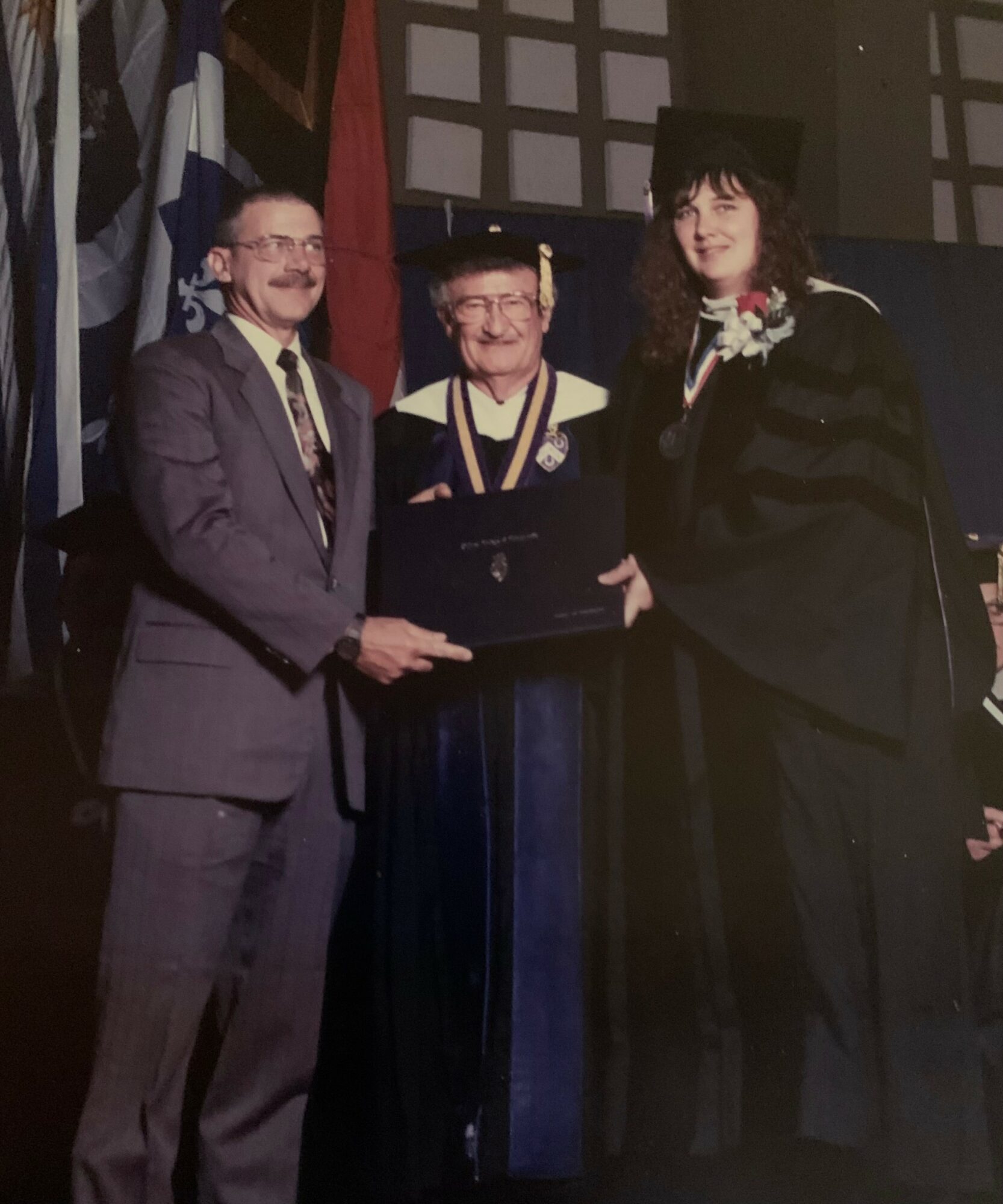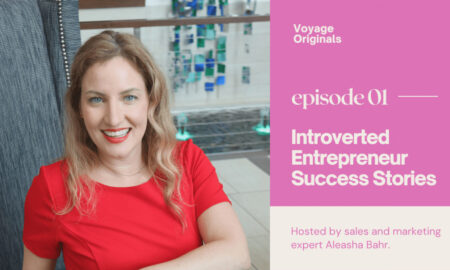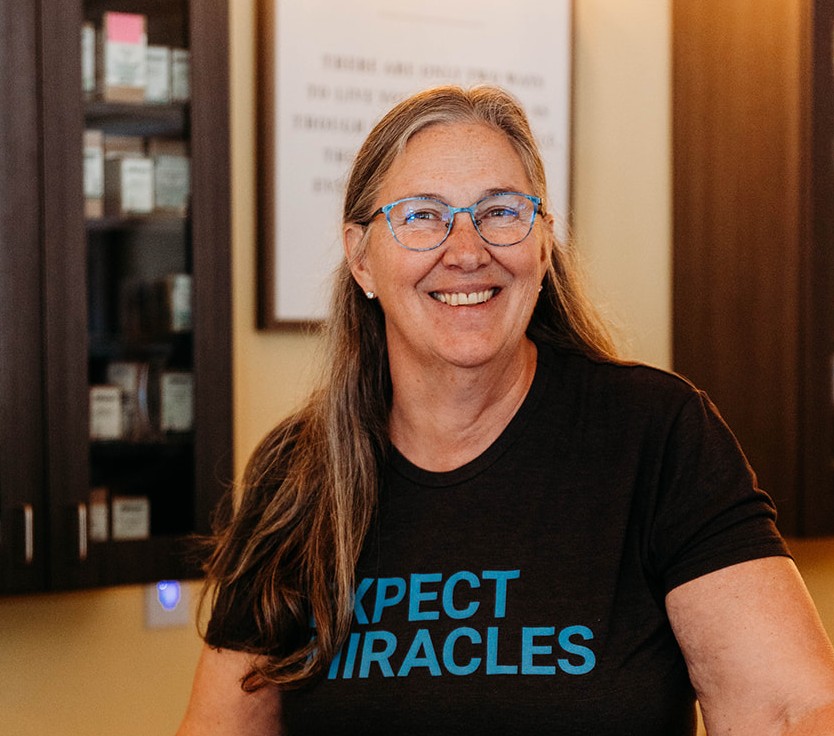

Today we’d like to introduce you to Kareen Oosterhart.
Hi Kareen, can you start by introducing yourself? We’d love to learn more about how you got to where you are today?
A Chiropractic Love Story
It’s hard to say exactly when my chiropractic story began. Maybe it started when I was six years old, when my dad hurt his back and began seeing a chiropractor. Or maybe it started when my brother began care with that same chiropractor for chronic ear infections. He was about to get his third set of tubes when the chiropractor told my parents that regular adjustments might help.
Shortly after beginning care, my brother stopped waking in the night screaming in pain. Our home became a little more peaceful, and something inside me began to stir.
Another spark may have ignited a few years later, when my dad enrolled at Palmer College of Chiropractic in Davenport, Iowa. I was eight when we packed up and moved so he could follow his dream. Sometimes we’d get to go to class with him, but my favorite spot on campus was always the library. Palmer’s collection of spines—from humans to animals, even a python—fascinated me. I could stare at that python spine for hours, completely captivated.
But I think my love for chiropractic was truly sealed after my dad’s graduation. We attended a seminar called Dynamic Essentials, focused on chiropractic philosophy. One of the speakers, Dr. James Sigafoose, told a deeply emotional story about losing his son because he hadn’t adjusted him. At the time, he said, he saw himself only as a musculoskeletal specialist and didn’t think adjusting an infant was part of chiropractic care. His honesty and heartbreak moved me to tears. I was only 11 years old, but I knew that day: I was going to be a chiropractor.
Twenty-six years later, Dr. Sigafoose would become both my mentor and my friend.
The Dream and the Detour
After that seminar, I started working in my dad’s office. I witnessed daily the power of chiropractic care—how it helped not just with back pain, but with ear infections, headaches, even bedwetting. We attended many philosophical and motivational seminars together, and I was raised on the belief that if I worked hard enough, I could achieve anything.
After high school, I attended community college to earn my associate’s degree, planning to move on to Palmer for my doctorate. That was my dream. But there was one obstacle I couldn’t overcome: chemistry. I took it twice and failed both times.
It broke me. I had been taught that effort equals success, and now my dream felt out of reach.
Then life took a different turn. I met Michael, who would soon become my husband. We married within a year, when I was 20. Two years later, our daughter Kendra was born, and two and a half years after that, our son Jared arrived.
Life was good—at least on paper. Michael worked long hours in the oil fields, and I stayed home with the kids. But deep down, I felt lost. I loved my family dearly, but something inside me was unfulfilled.
One day, my good friend Karen said, “You need to go back to school.”
I laughed. “If I ever went back, it would only be for chiropractic.”
“Then do it,” she said.
I told her it was impossible—Michael would have to quit his job, we’d have to move, and I’d have to pass chemistry. But she kept encouraging me, and eventually I asked him.
At first, he was hurt—he thought I wanted to leave him. But when I explained that pursuing my dream would make me a better wife and mother, that I needed something of my own to be proud of, he understood.
A Second Chance
At 29 years old, I re-enrolled in college. I had an amazing chemistry professor who recognized my severe test anxiety. He allowed me to take exams alone so I could pace and focus. With his support, I passed chemistry—and every other class.
Michael’s next challenge was finding a job near Palmer. We visited the campus, explored the area, and within a year he found work. In the summer of 1993, we moved to Davenport. I began classes at Palmer in March 1994 and graduated in October 1997.
Looking back, I know now that the detours were necessary. I needed to become a wife and mother first. Those experiences humbled me and taught me how to love and serve others—qualities that made me a better chiropractor.
Building the Dream
After graduation, I worked briefly in my dad’s office before opening my own practice on July 6, 1998. It was terrifying to go out on my own, but I had faith. Michael was still working, so we had some stability. I took out a small loan, borrowed a chiropractic table from a friend, and arranged a six-month loan from the X-ray company.
From the day I opened my doors, I never looked back.
A year later, Michael left his job, but my practice was strong enough to support our family. I rented office space for a few years before buying a building. It wasn’t in my dream location, but it was a start. Six years later, I purchased land just outside the village limits of Kalkaska, Michigan, and began designing my dream office.
Then the economy crashed.
The project was put on hold, and the waiting began. But as I’ve learned, waiting isn’t wasted time. During those years, I refined my vision, adjusted my plans, and researched the best builders.
Six years later, the dream came to life.
Worth Every Wait
It’s hard to believe I’ve been in my dream office for 11 years now—or that I’ve been in practice for 28. I’ve had the honor of caring for four generations within the same families.
And I still love it.
I still love walking into my office on Monday mornings. I still love seeing a patient’s face light up after an adjustment. I still feel that same spark that began when I was a little girl watching my dad study at Palmer.
Every delay, every challenge, every “no” along the way made the “yes” that much sweeter.
Dreams really do come true—sometimes you just have to wait for the right time.
We all face challenges, but looking back would you describe it as a relatively smooth road?
Waiting has always been one of life’s greatest challenges—and one of the hardest lessons to practice. In both life and chiropractic, patience is essential. Healing takes time, growth takes time, and so does learning when to let go.
As the years pass, another challenge emerges: aging. I’ve begun to recognize the need to slow down and think seriously about the future. Who will step into my role? Can I retire and find the right chiropractor to carry on the practice I’ve built? These are questions that many seasoned chiropractors eventually face.
Unfortunately, many new graduates today begin their careers burdened with significant student loan debt, making it difficult for them to purchase an established practice. It’s a dilemma that affects not only those looking to retire but also the profession’s ability to maintain continuity and community-based care.
An Unexpected Setback
In October 2023, I faced an obstacle I never saw coming—I fell and broke my wrist. For someone whose hands are their primary tools of healing, it was a devastating blow. Thankfully, a young chiropractor who had just graduated was able to step in and assist my patients. Even so, it took six months before I could return to full capacity.
Running a solo practice presents unique challenges—there are no “fill-in” chiropractors. That experience was a wake-up call. It reminded me that no matter how strong our dedication, none of us are invincible. For much of my career, I believed I would practice until the day I died. But that injury forced me to start planning for the next phase of life with greater intention.
The Changing Face of Chiropractic
Over the decades, I’ve witnessed remarkable changes in the chiropractic profession. When my father began practicing, nearly all payments were made in cash, as insurance rarely covered chiropractic care. Then, during the 1980s, insurance coverage expanded, allowing more patients to access our services. I still remember typing claim forms on a typewriter—today, those same claims are submitted electronically with a single keystroke.
Technology has undeniably improved efficiency, yet it has also introduced new complexities. With the rise of digital systems came increased documentation requirements and the necessity of diagnostic codes—codes that reflect musculoskeletal conditions but often fail to capture the broader neurological and wellness aspects of chiropractic care.
In some ways, these changes have drawn us away from the heart of chiropractic: the removal of subluxation and the restoration of the connection between man the physical and man the spiritual.
Balancing Progress and Purpose
While insurance coverage and technology have opened the door for more patients to experience chiropractic, they have also brought added administrative burdens. The simplicity that once defined our work sometimes feels overshadowed by screens and codes.
There are days when I long for those earlier times, when our focus was purely on the adjustment and the restoration of health—when healing was hands-on, personal, and uncomplicated. In many respects, the old ways still hold great wisdom.
Thanks for sharing that. So, maybe next you can tell us a bit more about your business?
Chiropractic Services, practicing for over 28 years in Kalkaska MI
What matters most to you?
Choice.
Everything we do comes down to choice. And one of the most powerful truths I’ve come to understand in over 27 years as a chiropractor is this: our health — physically, mentally, and spiritually — is a choice.
Yes, we all have genetic predispositions. Yes, we face environmental challenges. But how we respond, how we care for ourselves and others, and how we move through the world — that’s our choice. We can choose to sit back and do nothing, or we can choose to take action, to be proactive, and to take responsibility for our well-being.
At the heart of chiropractic philosophy lies a simple yet profound concept: the three causes of subluxation — thought, toxins, and trauma (commonly referred to as the 3 Ts).
Dr. B.J. Palmer, the developer of chiropractic, defined a subluxation as:
“A condition where a vertebra has lost its proper alignment with the vertebrae above or below it. This misalignment impinges or puts pressure on nerves, interfering with the transmission of mental impulses from the brain to the body — a condition he believed to be the cause of all dis-ease.”
It’s important to pause here and reflect on the word dis-ease. This doesn’t necessarily mean sickness in the conventional sense, but rather a lack of ease within the body — a breakdown in communication, a system that is no longer adapting well to stress. And if left uncorrected, that dis-ease can progress into dysfunction and eventually into diagnosable disease.
So what else matters deeply? Adaptability.
Our ability to adapt is the true measure of health. But if the nervous system — the main control center for every function in the body — is under stress or interference, then even the best choices can be undermined. The body may not respond the way it’s designed to.
I’ve seen this play out in real lives:
• A newborn unable to latch and feed due to nervous system interference — affecting not only their growth but the emotional state of their parents.
• A child who wets the bed every night — struggling with self-esteem and disrupting family harmony.
• A father sidelined by back pain, unable to work or support his family — leading to financial and emotional stress.
• A mother debilitated by chronic headaches, retreating to a dark room while life passes by just outside her door.
• Pregnant women suffering from pelvic pain or facing breech presentations — and the immense relief, joy, and empowerment when adjustments help resolve those issues and contribute to a natural birth.
These aren’t just cases — they’re people. Families. Babies. Futures.
That is what matters most.
The power to choose. The power to adapt. The ability to thrive when our nervous system is functioning without interference. Chiropractic is not just about back pain. It’s about unlocking potential, supporting families, and restoring the body’s natural ability to heal and adapt.
What matters most to me is helping people reclaim their health through clarity, choice, and connection — because when the body is aligned, life moves forward with greater ease.
Contact Info:
- Website: https://www.village-chiropractic.com


